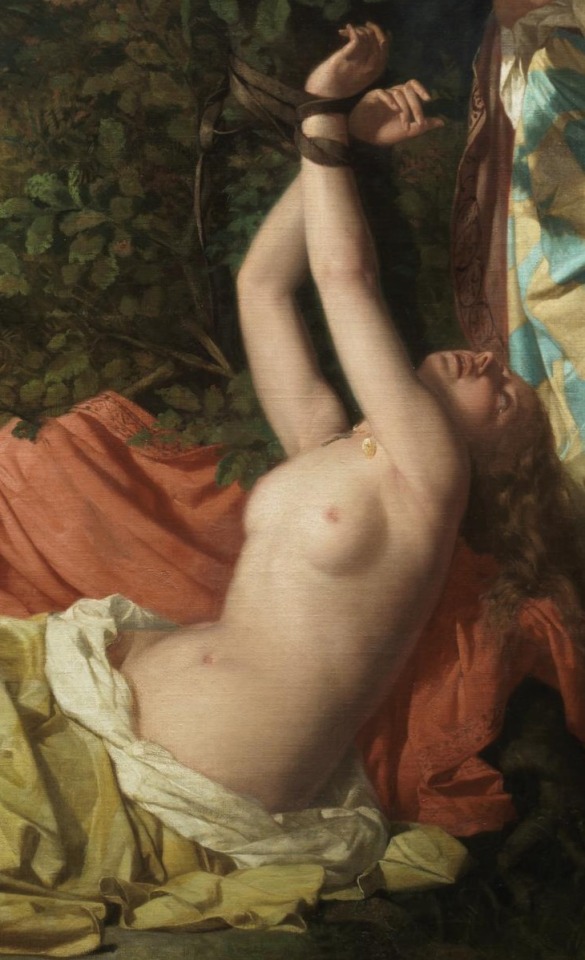#dióscoro puebla
Text

First Landing of Christopher Columbus on the Shores of the New World
by Dióscoro Puebla
#christopher columbus#art#age of discovery#age of exploration#age of sail#new world#dióscoro puebla#spain#spanish#americas#america#exploration#explorer#history#island#caribbean#west indies#europe#european#christianity#christian#discovery#voyage#voyages#genoa#niña#pinta#santa maria#ships
43 notes
·
View notes
Text

Dióscoro Puebla (Spanish, 1831-1901)
Una Bacante y un Sátiro, 1859
Real Academia de Bellas Artes de San Fernando
#Dioscoro Puebla#Dióscoro Puebla#spanish art#art#spanish#hispanic#latin#european art#fine art#classical art#europe#european#oil painting#fine arts#europa#mediterranean#bacante#satiro#una bacante y un satiro#1800s#late 1800s#1800s art#artword#brunette#woman#female#mythological art#greek mythology#southern europe
68 notes
·
View notes
Text


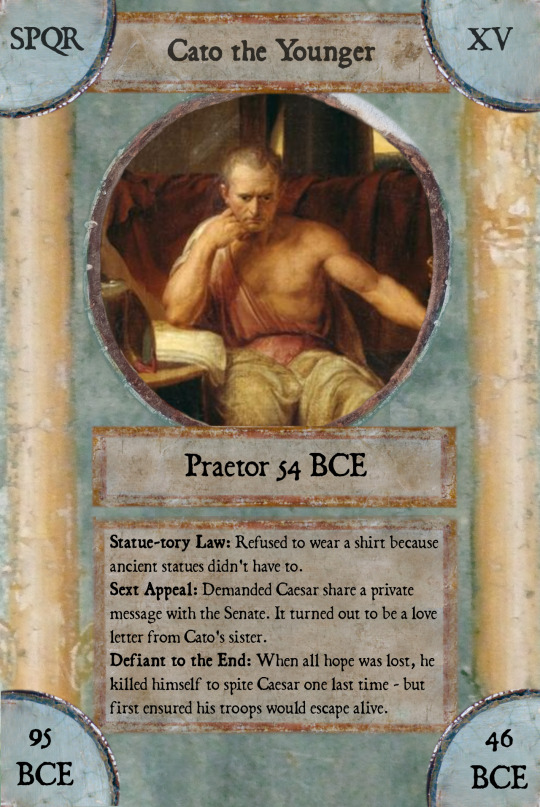

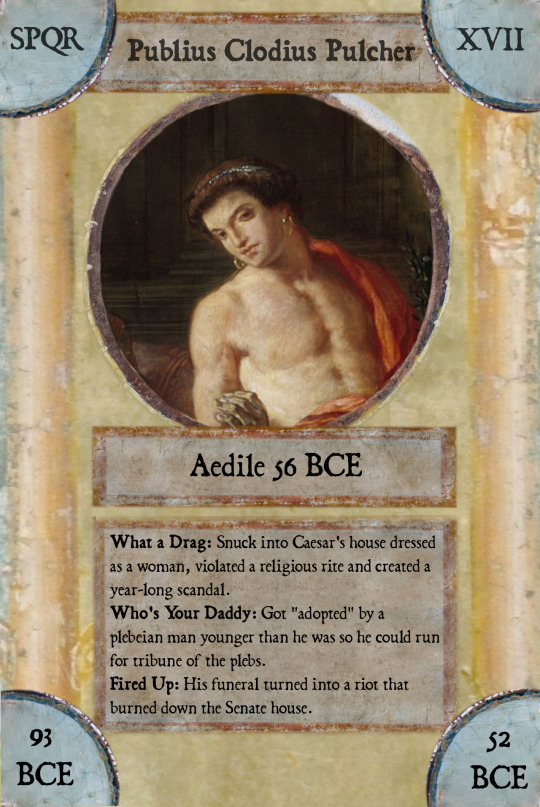
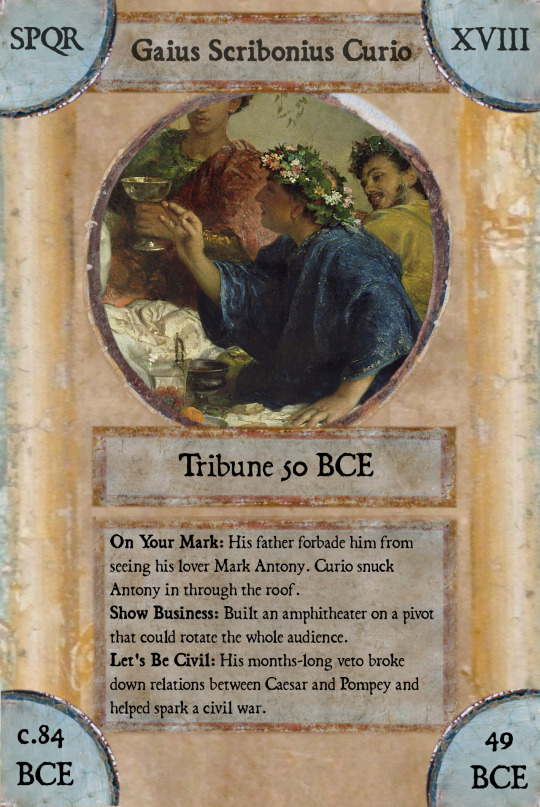
Ancient Roman trading cards: Tribune Trouble!
Historical notes and artist attributions under the cut. For more silly trading cards, check out the Julio-Claudians.
Many famous Romans were tribunes of the plebs at some point, but I'm only featuring those who pushed that office to its limit, usually by causing trouble.
My aim here is to capture some of their personality while making history fun and silly. So, some of these facts come from ancient sources that might be biased or wrong, but I have tried to keep it plausible. Some of the art has been adapted from paintings of other Romans because it felt fitting for these guys. If you want to learn more about them, check out my favorite Roman history books!
Background color = highest office achieved. Orange for quaestors and tribunes, yellow for aediles, green for praetors, blue for consuls, purple for emperors and red for dictators. Everybody else gets gray.
Paintings featured:
Cornelia, mother of the Gracchi by Joseph-Benoit Suvée
Farewell of Gaius Gracchus to his family by Dióscoro Puebla
Cato Uticensis by Josef Abel
Lictors bringing Brutus the bodies of his sons by Jacques-Louis David
Marcus Aurelius by Eugene Delacroix
A Roman Feast by Roberto Bompiani
Other art textures come from the frescoes of Pompeii.
#jlrrt speaks#ancient roman trading cards#suicide mention#gaius gracchus#tiberius gracchus#cato the younger#titus annius milo#publius clodius pulcher#gaius scribonius curio#just roman memes#my edits
131 notes
·
View notes
Photo
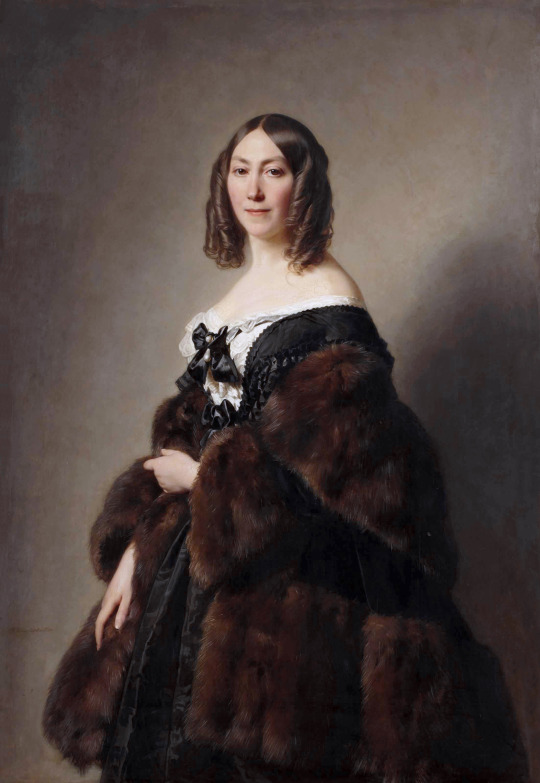



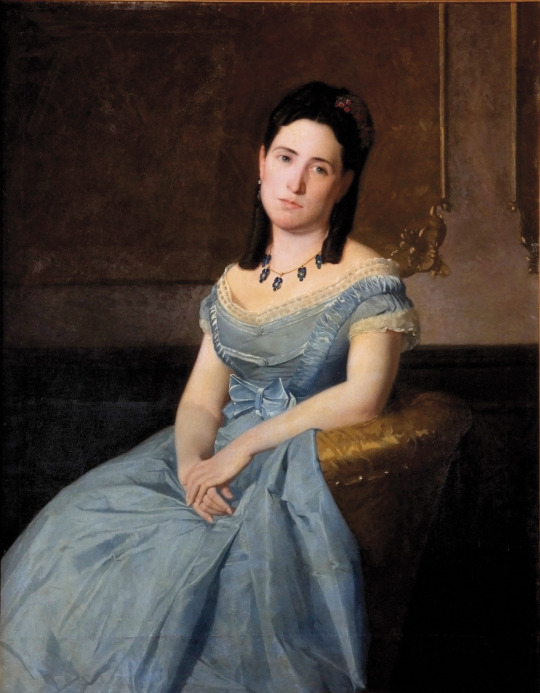
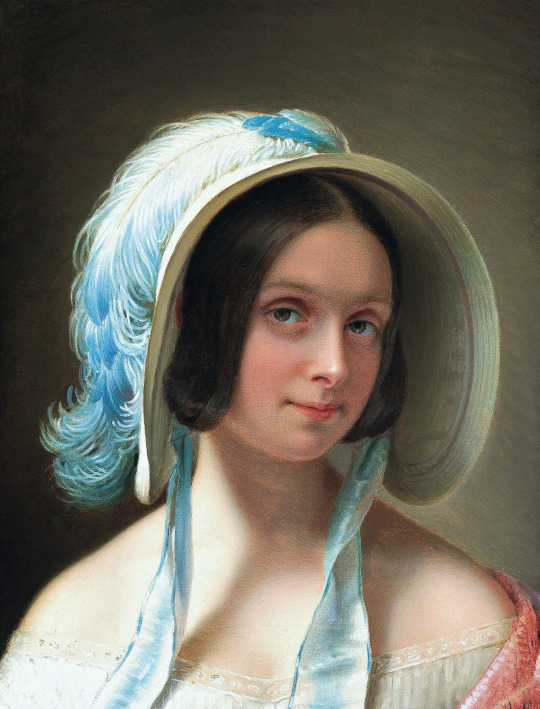
1860s dresses -
Top ca. 1860 Cécile Charlotte Furtado-Heine (1821-1896), by Hermann Fidel Winterhalter (Christie's - 15Apr13 auction, Lot 61). From Wikimedia; fixed l. and r. edges and a few spots w Pshop 2208X3200 @60 1.3Mj.
Second row left 1863 Rita Romero by Ángel María Cortellini y Hernández (Museo del Romanticisimo - Madrid, Spain). From theebonswan.blogspot.com 564X926 @72 89kj.
Second row right 1867 Mrs Catherine Glen Stronach of Lindsaylands by Daniel Macnee (Perth Museum & Art Gallery - Perth, Perth and Kinross, UK). From artuk.org 1194X1855 @144 2.3Mp.
Third row 1861 Szidónia Deák by Alajos Györgyi Giergl (location ?). From tumblr.com/toanunnery/700310287103000576/portrait-of-szidónia-deák-alajos-györgyi-giergl 978X1200 @72 275kj.
Fourth row left ca. 1865-1866 Paulina Contreras de Alarcón by Dióscoro Puebla (Biblioteca Lázaro Galdiano - Madrid, Spain) From history-of-fashion.tumblr.co//post/144151144109/ab-1865-1866-dióscoro-puebla-paulina-contreras 1280X1643 @300 639kj.
Fourth row right 1871 (earlier than) Countess Festetics, née Countess Roczinska by Anton Einsle (location ?). From tumblr.com/the-perdita; fixed spots w Pshop 2048X2688 @72 2.2Mj.
#1860s fashion#early Victorian fashion#second Empire fashion#crinoline era fashion#Cécile Charlotte Furtado-Heine#Hermann Fidel Winterhalter#straight hair#side curl coiffure#off shoulder V neckline#fur coat#bow#full skirt#Rita Romero#Ángel María Cortellini y Hernández#off shoulder scoop neckline#chemise#quarter-length sleeves#V waistline#crinoline#Catherine Glen Stronach#Daniel Macnee#train#Szidónia Deák#Alajos Györgyi Giergl#laced bodice#ruching#Paulina Contreras de Alarcón#Countess Festetics#Anton Einsle#feathered bonnet
40 notes
·
View notes
Text
12 de octubre: De la confusión de Colón al decreto de CFK
12 de octubre: De la confusión de Colón al decreto de CFK
El 12 de octubre se conmemora en la Argentina el Día del Respeto a la Diversidad Cultural, antes llamado Día de la Raza. Algunas curiosidades.
12 de octubre: Pintura romántica de la llegada de Cristóbal Colón a América (Dióscoro Puebla, 1862).
El día 12 de octubre se conmemora el Día del Respeto a la Diversidad Cultural, antes llamado “Día de la Raza“, celebración que cambió de nombre a partir…
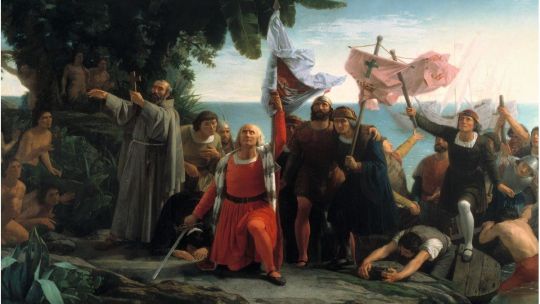
View On WordPress
0 notes
Text

Agila I, rey de los Visigodos por Dióscoro Puebla.
#Dióscoro Puebla#reyes visigodos de españa#kings of the visigoths#kingdom of the visigoths#regnum visigothorum#visigoth#reyes de españa#kingdom of spain#monarquía española#monarquia española
20 notes
·
View notes
Photo

‘The name given to a child at baptism was believed to have an influence on the child’s character, so when Susanna selected the name Cristoforo, she may well have been trying to affect his destiny. (…) Indeed, Susanna’s choice was prophetic: not only did the patron saint of travelers keep Columbus safe during his extraordinary travels, but Columbus himself, like his namesake, would come to feel that he was destined to be a Christ-bearer, carrying Christianity across the Ocean Sea.’
— Carol Delaney, ‘Columbus and the Quest for Jerusalem’ (2011)
Desembarco de Colón
by Dióscoro Puebla (Spanish, 1831 - 1901)
oil on canvas, 1862
Museo del Prado
#631801608034041857/NjJBkapV#Dióscoro Puebla#House of Colón#Cristóbal Colón#Carol Delaney#Spain#19th century#1862#Museo del Prado#October 12th#1492#oil on canvas#quotes#paintings
3 notes
·
View notes
Photo
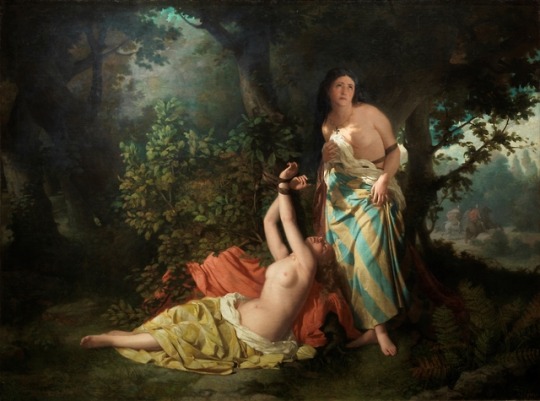
El Cid's Daughters, from Romance XLIV of the Tesoro de Romanceros, Dióscoro Puebla (Spanish, 1831–1901), 1871
Oil on canvas
#art history#history of art#Dióscoro Puebla#spanish art#spanish painter#spanish artist#oil on canvas#oil painting#painting#paintings#19th century art#19th century#1800s#1800s art#Academicism#academic art#museo del prado#uploads
36 notes
·
View notes
Photo

Sabias QUE?
12 de Octubre de 1492.
Descubrimiento de América
Se denomina descubrimiento de América al acontecimiento histórico del 12 de octubre de 1492, consistente en la llegada a América de una expedición dirigida por Cristóbal Colón por mandato de los Reyes Católicos, Isabel de Castilla y Fernando de Aragón.
Colón había partido del Puerto de Palos dos meses y nueve días antes y, tras cruzar el océano Atlántico, llegó a una isla del continente americano, Guanahani, creyendo que había llegado a la India.
Este hecho es uno de los momentos fundamentales de la historia universal y representa el encuentro de dos mundos que habían evolucionado independientemente desde el poblamiento de América.
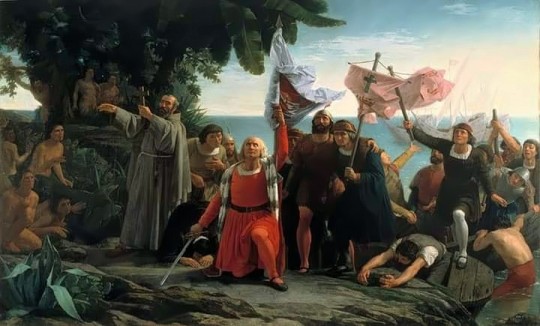
Una visión romántica de la llegada de Cristóbal Colón a América (Dióscoro Puebla, 1862).
Personalmente creo que Colón no descubrió nada, allí ya habían civilizaciones viviendo y mejor aquí dejo el tema, pero nos guste o no es Historia y había que mencionarlo 🙏
10 notes
·
View notes
Text

Dióscoro Puebla (Spanish, 1831-1901)
Christopher Columbus's first landing in America, 1862
Museo Nacional del Prado
#Dióscoro Puebla#spanish art#christopher columbus#art#fine art#european art#classical art#europe#european#oil painting#fine arts#europa#mediterranean#spanish#hispanic#latin#artwork#painting#1800s
23 notes
·
View notes
Photo
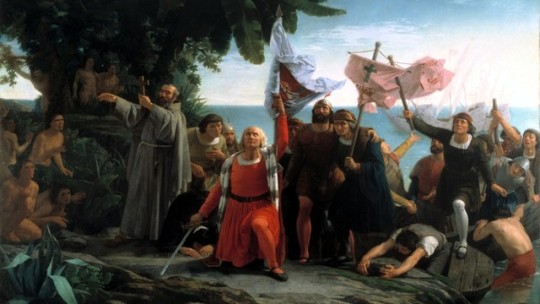
1492 Desembarco de Colón - Dióscoro Puebla
9 notes
·
View notes
Photo
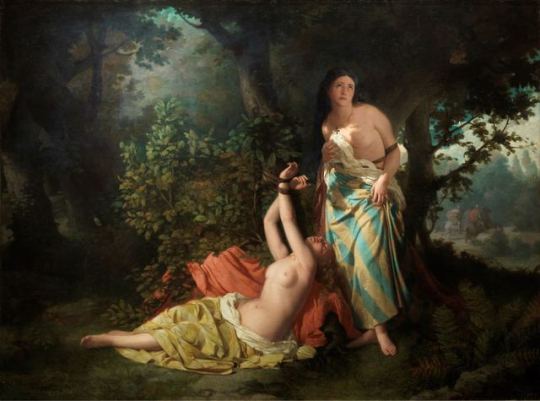
Five from the Prado Museum, Madrid. Visited 08/10/2018. Copyright©️Museo Nacional Del Prado. 3. El Cid’s Daughters, from Romance XLIV of the Tesoro de Romanceros, Dióscoro Teófilo Puebla Tolín.
1 note
·
View note
Photo
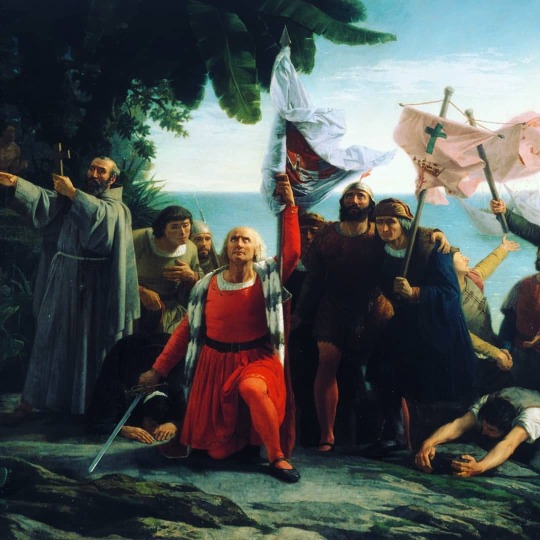
Liberdade é alma navegante. Dos sonhos que vão além-mar... Mirante é o nosso sol distante. Velejar também é voar, batam asas novos pombos! Saldai as línguas ibéricas. Fernão, Isabel , Aragão, Castela! Naus, desnudam as vossas velas. O ovo chocou o seu Colombo. Terra à vista! Silvícolas a cruz é a conquista. O novo sol se chamará América. ___________________________________ Autor: (ChicosBandRabiscando) Poema: O fim do Paraíso Credites:https://commons.wikimedia.org/wiki/File:Desembarco_de_Col%C3%B3n_de_Di%C3%B3scoro_Puebla.jpg Dióscoro Puebla / Public domain https://www.instagram.com/p/CEPMzbVh6ko/?igshid=frjilswnlc6j
0 notes
Text
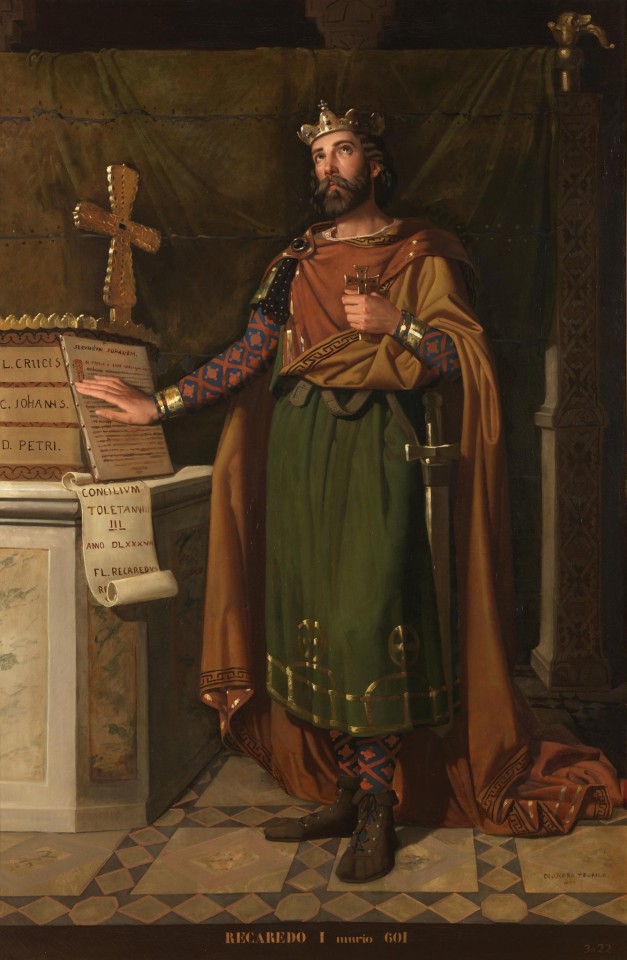
Recaredo I, rey de los Visigodos por Dióscoro Puebla.
#Dióscoro Puebla#monarquía española#monarquia española#reyes visigodos#visigothic kingdom#kingdom of the visigoths#regnum visigothorum#visigoth#reyes visigodos de españa#reyes de españa
5 notes
·
View notes
Photo
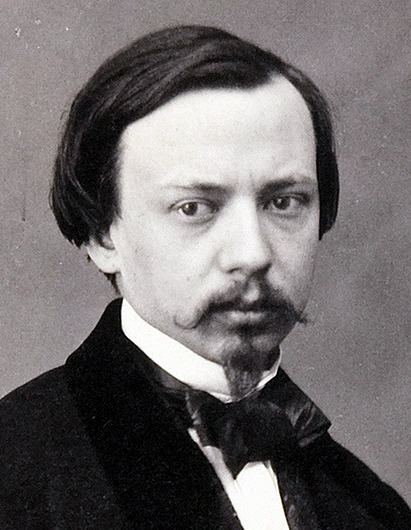
Photography of Luis de Madrazo (c.1855-1860)
Luis de Madrazo y Kuntz (27 February 1825, Madrid – 9 February 1897, Madrid) was a Spanish painter of portraits and religious scenes from a well-known family that included his father José (a painter), and his brothers Federico (also a painter), Pedro (an art critic) and Juan (an architect). His Polish grandfather Tadeusz Kuntze was a painter as well.
He and his brothers received their first art lessons in their father's studio. Later, he entered the Real Academia de Bellas Artes de San Fernando. In 1845, he found employment as an illustrator for the magazine Seminario Pintoresco Español. Several years later, he received a fellowship that enabled him to complete his studies in Rome and improve his style. At first, he attended the Accademia di San Luca, then enrolled at the French Academy in Rome at the Villa Medici. While there, he met Friedrich Overbeck and came under the influence of the Nazarene movement.
Following his studies in Rome, he toured Europe, living briefly in Paris, Munich, Venice and Berlin. In the early 1890s, he settled for a time in Pompeii with two of his fellow painters from Spain. He returned to Madrid when the influence of his father and older brothers had gained him entry into that city's artistic circles, leading to the belief that his success was due entirely to his family's reputation.
During this final period of his life, he primarily devoted himself to teaching and painting portraits of the nobility. He received the rank of Commander in the Order of Isabel the Catholic and eventually became Director of the "Escuela Superior de Pintura, Escultura y Grabado de Madrid". Upon his death, he was succeeded by Dióscoro Puebla.
The name Nazarene was adopted by a group of early 19th century German Romantic painters who aimed to revive honesty and spirituality in Christian art. The name Nazarene came from a term of derision used against them for their affectation of a biblical manner of clothing and hair style.
14 notes
·
View notes
